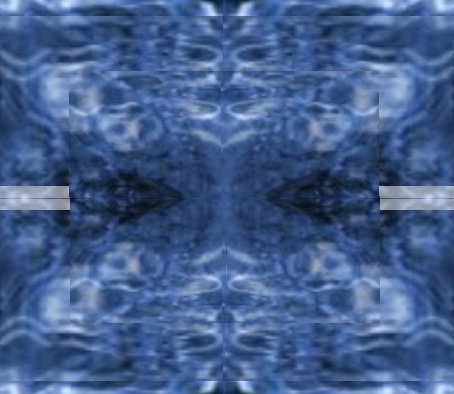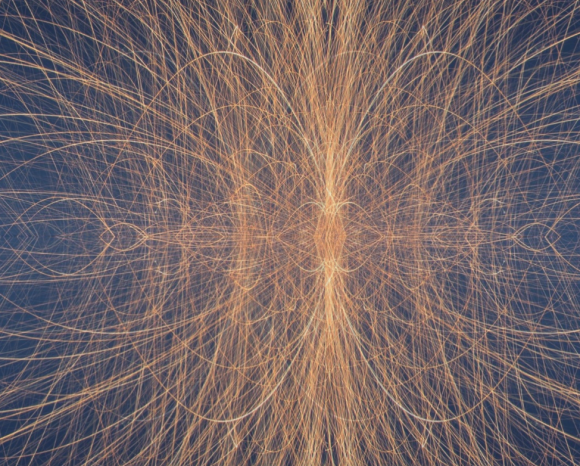I concluded my last post with a bit of a provocative hypothesis. I don’t mean it quite seriously, but I’m exploring it to some degree, in order to learn what might support it and what might suffice to dispel it. Yet even though it’s not seriously entertained, the thesis is a far-reaching one. Here’s why.

At the end of his discussion of the Pauli dream series in Psychology & Alchemy (GW XII), Jung points out just how special this material is. For one thing, he claims a certain independence of the observed material from his own theories: the analysis was not done by himself, but by a colleague, and in later stages, Pauli had recorded and worked through the dream material largely on his own; according to Jung, there had been no guided interpretation (cf. §§ 45, 51). This does eliminate a great number of covert influences (though by no means does it exclude all conceivable ones). The main takeaway for Jung is, however, that the process of personal development (the individuation process) ran its course naturally, and generated its own symbols (most prominently: mandalas), unhindered and unguided by pre-existent expectations.
Was in diesem Falle aber besonders bemerkenswert ist, das ist die Folgerichtigkeit in der Entwicklung des zentralen Symbols. […] Wird […] dem Prozeß der Lauf gelassen, wie es in unserm Fall geschah, dann drängt sich das zentrale Symbol mit stetiger Konsequenz, immer wieder erneuert, durch das scheinbare Chaos dramatischer Verwicklungen der persönlichen Psyche hindurch […].
[es] handelt sich um bedeutsame ‘Kernvorgänge’ in der objektiven Psyche; um eine Art Bilder des Zieles, die sich der ‘zielgerichtete’ psychische Prozeß anscheinend selber setzt, ohne dazu von einer äußeren Suggestion veranlaßt zu sein.
GW XII, §§ 325, 328.
For another, he thinks’s it is an especially clear and detailed individual expression of something for which he claims nonetheless an underlying universality:
Insofern das Mandalamotiv ein Archetypus ist, müßte es ein kollektives Vorkommen haben, das heißt theoretisch müßte es bei jedem Menschen vorkommen. In praxi aber wird es nur in relativ wenigen Fällen in deutlicher Ausprägung angetroffen, was aber keineswegs hindert, daß es die Rolle eines geheimen Pols spielt, um den sich in letzter Linie alles dreht. (§ 330)
Let’s pause here to notice the breathtaking self-assurance with which Jung glosses over a major inconsistency in his thinking. Remember his insistence that all his views are based on “experience”, which he implies to be neutral observation of repeated occurrences? He generally tries to make his theories look like a form of empirical science, accounts of objective and natural patterns, repeatable and universal, which he has observed in his practice. But the material on which he bases the theory in Psychology & Alchemy is in truth neither repeatable nor universal, as he says here himself. Nonetheless, he doesn’t even make a full stop before claiming that this “not at all prevents” (“hindert keineswegs”) that it is a “secretly operative” pole at the center of everything (!). How so? Suppose someone made a claim like this:
Whenever you flip a coin five times, it will come up heads each time. That’s a secret, underlying law of the procedure. Of course, in praxi it will only show up occasionally, which however does not at all imply that it isn’t the underlying essence of a coin flip that it always brings up heads.
Would that sound convincing to you? (There is a parallel here, by the way, in the flawed methodology of the J.B. Rhine experiments, which Jung frequently cites: the notion of so-called “optional stopping”, the discretionary halting of an experiment once the result starts to look statistically significant — which can of course generate false positives. In our case, imagine someone sets out to throw the coin a hundred times, then “optionally stops” after the first five throws when they all come up heads, concluding “scientific proof” of the underlying law that coin flips “always come out heads”. It’s clearly absurd in this stark form; but even in its more subtle statistical version, it was a severe fault in Rhine’s methodology. Rhine himself eventually acknowledged the problem; Jung, on the other hand, and perhaps not entirely surprisingly, insisted that the Rhine experiments had scientifically demonstrated objective results “beyond all possible doubt”, long after such flaws had been exposed.)
The same tension in Jung’s claims can be found throughout; he says of the Pauli dream series:
Diese Serie ist darum bemerkenswert, weil sie eine psychische Tatsache, die ich schon längst zuvor bei vielen einzelnen Individuen beobachtet hatte, in seltener Vollständigkeit beschreibt. (§ 323)
Notice again here how Jung simply claims factuality and generality: he calls the developmental process and the symbolism he finds in the dream series a “fact” (Tatsache) which he says he’s observed “long before”, and in many individual cases. The rhetoric suggests there is a mass of data, without however yielding even a hint of quantification (what does “many individual cases” mean?); also, there is a very misleading footnote attached to this claim, which one might expect to point to a published account of these observational data, but which in reality only quotes two earlier works which describe mandala symbolism detached from individual cases; the editors have added a further quotation which, again, doesn’t refer to psychological evidence, but merely a further collection of occurrences of the same symbolism. But the most telling turn of phrase is again the admission that the Pauli series is “rare” in presenting a complete case in point for Jung’s views (“in seltener Vollständigkeit”). Once more, the actual situation betrays an astonishing lack of generality: what Jung claims to be a universal phenomenon is in reality only a single, individual case.
What is special about this case is the personality of the subject:
Wir verdanken es nicht nur der Vollständigkeit des objektiven Materials, sondern auch der Sorgfalt und Akribie des Träumers, daß er uns in den Stand gesetzt hat, die synthetische Arbeit des Unbewußten Schritt für Schritt zu verfolgen. (§ 323)
And with this, we’re at the crux of the problem. What the Pauli series shows, according to Jung, is a psychological process which happens generally and expresses itself in the same, universal symbolism — and it is rare to have material to show this, because of the careful recording the subject has done.
But there is an alternative, and equally plausible interpretation: that there is no general psychological process and no universal symbolism at all, there just happens to appear a particularly imaginative and narratively coherent subject (with a formidable and convincing personality, too). It’s just Pauli’s subjective world we’re exploring here; and that his dreams tell such a compelling story does not show the least about other people’s psychological worlds.
And what evidence does Jung give us to the contrary? Nowhere in the whole of Psychology & Alchemy he shows that there is even a single sufficiently similar case to Pauli’s (he merely interprets much cultural material, based on similarities he perceived, as demonstrating “the same pattern”). His frequent recurse to his personal “experience” remains a claim, not backed up by evidence; whereas his references usually lead to further collections of symbolism, arranged by perceived similarities in Jung’s personal view. His own admissions of the “rarity” of the material, which should have given him pause before generalizing them, he discounts as soon as he makes them. (And the way he deals with any critics throughout is to lash out at them ad hominem, rarely even acknowledging their actual arguments, let alone answering them.)
Thus reading the presentation in Psychology & Alchemy, it is hard to resist the conclusion that what Jung does here is not a generalization over many individual data points, but rather a case of being influenced by a particularly compelling narrative account, an idiosyncratic certainty. There clearly was a story he already wanted to believe in, and a preferred symbolism he expected to appear — when they showed up, he simply took this single case as evidence and assumed that in other individuals, where these wouldn’t appear with such “rare completeness” (in seltener Vollständigkeit), where they wouldn’t “in praxi” occur in such a clear expression (in deutlicher Ausprägung), they still had to be there, and there was no theoretical or methodological problem at all about such assumptions.



